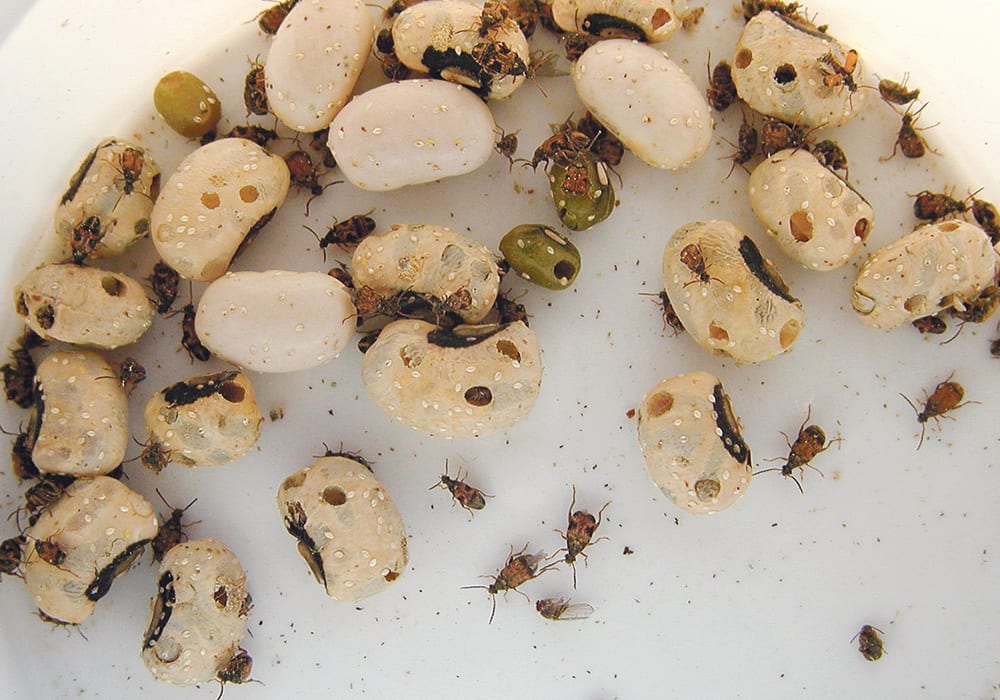Bean weevils, scientifically known as Acanthoscelides obtectus, are tiny pests that can wreak havoc on stored beans and legumes. These beetles feed on various bean varieties, causing damage to the crops and contaminating them with their waste. Controlling bean weevils is essential to protect your stored food and ensure the safety of your pantry. In this article, we will explore effective methods on how to get rid of bean weevils and prevent future infestations.
Bean weevils can be important from both negative and positive perspectives. While they can be agricultural pests causing economic losses, they also play significant roles in ecological processes and contribute to scientific research.
Managing their populations in agricultural settings while understanding their ecological roles is essential for sustainable agriculture and ecological balance.
I know you do not really care about its importance, you just want to figure a way out to get rid of those weevils on the expensive bean crop you have in your pantry. Here are some few ways on how to get rid of bean weevils;
How to get rid of bean weevils
- Identify the problem
- Clean and organize
- Freeze infested beans
- Heat treatment
- Store beans properly
- Natural repellents
- Diatomaceous earth
- Regular inspection
- Traditional Method

Identify the Problem: The first step in tackling any pest infestation is to confirm the presence of bean weevils. Look for small, dark-brown beetles or tiny holes in the beans or bean pods, as these are telltale signs of an infestation. Additionally, monitor for larvae, eggs, or webbing in stored beans.
Clean and Organize: Before implementing any control measures, thoroughly clean your pantry or storage area. Remove all beans and legumes and inspect them for signs of infestation.
Dispose of any contaminated items, and vacuum or sweep the storage space to eliminate any remaining weevils or debris. Keeping a tidy and well-organized pantry will make it less attractive to pests.
Freeze Infested Beans: If you have discovered bean weevils in your stored beans, freezing them is an effective way to eliminate the pests. Place the infested beans in sealed plastic bags and freeze them for at least 48 hours.
This process kills both the adult weevils and their eggs, preventing them from further damaging your beans.
Heat Treatment: If freezing is not feasible, consider using heat treatment. Preheat your oven to 140°F (60°C) and place the infested beans on a baking sheet.
Keep them in the oven for about 30 minutes to kill the weevils and their eggs. Ensure you do not exceed the recommended temperature to avoid damaging the beans.
If you do not have an oven, you can simply use your cooking gas, place a dry pot and heat your beans under low heat to kill the weevils.
Store Beans Properly: Prevention is key to avoiding future bean weevil infestations. Store beans in airtight containers made of glass, plastic, or metal to prevent access for pests. Avoid using paper or cardboard containers as they are susceptible to penetration.
Label the containers with the purchase date to ensure you use the oldest beans first, reducing the chances of long-term storage.
Natural Repellents: Several natural repellents can help deter bean weevils from infesting your stored beans. Bay leaves, cloves, and peppercorns are known to be effective in keeping these pests at bay.
Place a few of these items in your storage containers to create a hostile environment for the weevils.
Diatomaceous Earth: Diatomaceous earth is a natural and safe powder made from fossilized algae that can effectively control bean weevils. Sprinkle diatomaceous earth around the storage area and on top of the stored beans.
The fine particles will dehydrate and kill the pests upon contact, preventing them from causing any further damage.
Regular Inspection: Keep a vigilant eye on your stored beans even after taking preventive measures. Regularly inspect the containers for any signs of infestation and promptly address any issues. Early detection allows for faster intervention and prevents the spread of the infestation.
Traditional method: Didn’t know what name to use for this, so I just gave it a traditional method. Here you take the beans outside the house and spread on the floor, preferably on an artificial carpet grass during the day, leave there for some minutes where it is exposed to sunlight and come back to meet most of the weevils trapped inside the grass.
I did this some days back and it took over 95% of the weevils I had in my beans out, the other 5% were inside the beans, they didn’t leave for some reasons best known to them.
Read also: How to get rid of rice weevilsThe bottom line
Protecting your stored beans from bean weevils requires a combination of proactive measures and prompt action. Identifying the problem, cleaning, and organizing your storage space, freezing infested beans, and using natural repellents are all effective ways to get rid of bean weevils.
By implementing these methods and staying vigilant, you can ensure your beans remain pest-free and safe for consumption. Remember, prevention is always better than dealing with a full-blown infestation, so maintain good storage practices to safeguard your precious food supplies.
Read also: How to get rid of spider mites on roses